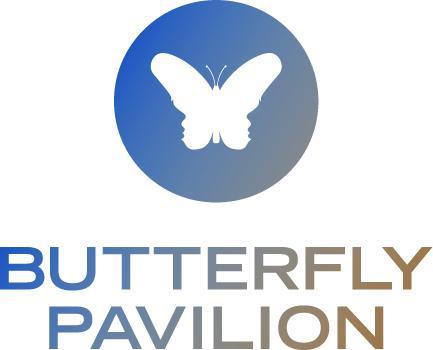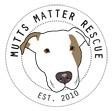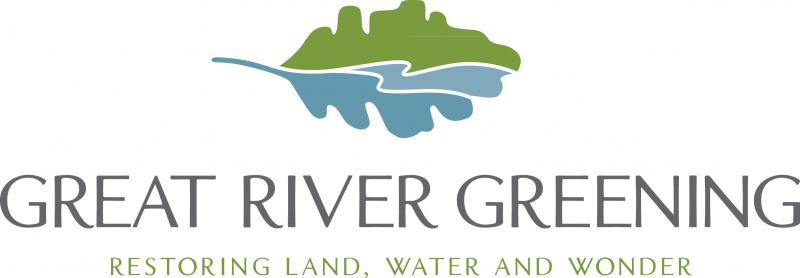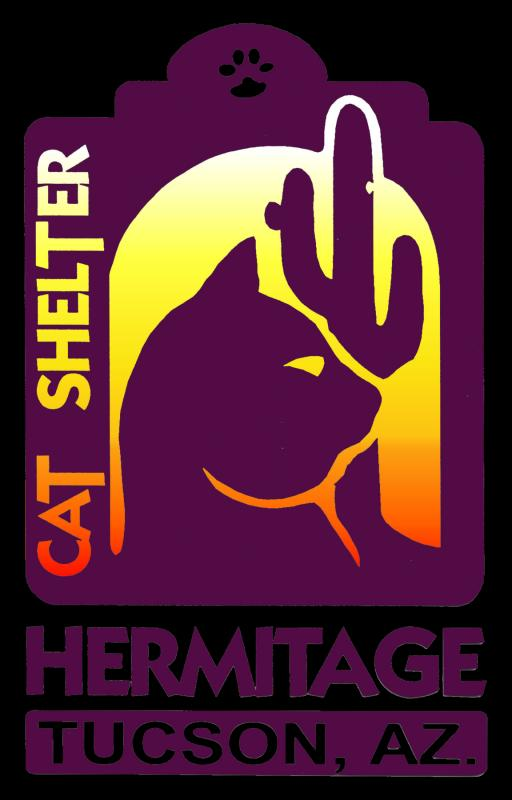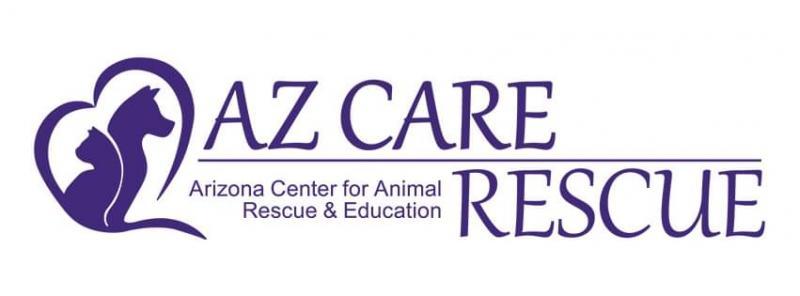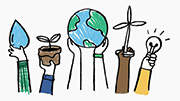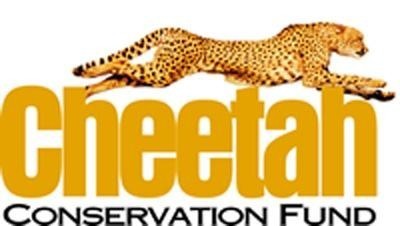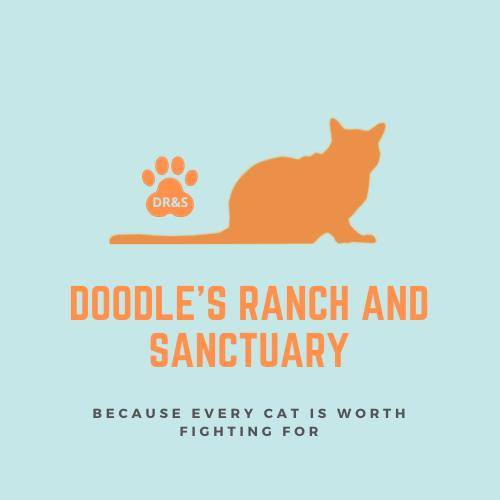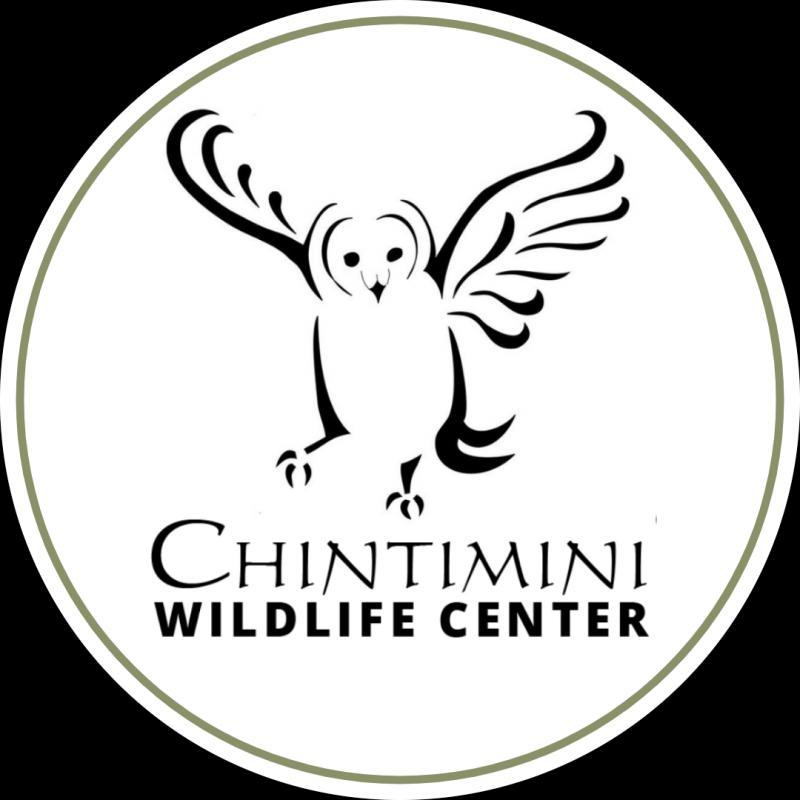Causes: Animals, Environment, Environmental Education, Wildlife Preservation & Protection
Mission: We believe America’s experience with cherished landscapes and wildlife has helped define and shape our national character and identity for generations. Protecting these natural resources is a cause that has long united Americans from all walks of life and political stripes. To hunters, anglers, hikers, birders, wildlife watchers, boaters, climbers, campers, cyclists, gardeners, farmers, forest stewards, and other outdoor enthusiasts, this conservation ethic represents a sacred duty and obligation to protect and build upon our conservation heritage for the sake of wildlife, ourselves, our neighbors, and—most of all—for future generations. --- This belief led us to form a new strategic plan for saving wildlife that are suffering declines across America, with the goal of increasing America's fish and wildlife populations and enhancing their capacity to thrive in a rapidly changing world. The plan sets in motion a Common Agenda for Wildlife built upon sound science, clear priorities, and scalable solutions. Our Common Agenda includes a commitment to:-Protect, Restore, and Connect Wildlife Habitat: Active restoration and reconnection of fragmented and degraded habitat across protected lands, working lands, waterways, coasts, and communities. -Transform Wildlife Conservation: Advancing 21st century wildlife management, defending public trust resources, and confronting emerging stressors like climate change, invasive species, and wildlife diseases. -Connect Americans with Wildlife: Inspiring the next generation of conservationists and mobilizing a diverse conservation army to broaden the stewardship ethic, conservation action, public and private investments, and support for policy changes necessary to save thousands of at-risk species in our time.
Results: Some of our most notable wins for wildlife in 2021 include:-- Passage of the Recovering America’s Wildlife Act. This year’s passage of the bill in the House of Representatives and introduction in the U. S. Senate represent critical steps toward stemming the wildlife crisis. This legislation will provide funding for states and territories to proactively address the conservation needs of threatened and at-risk wildlife species. --Los Angeles’ 101 freeway, one of the busiest in the country, is a significant barrier to the ecological health of the region and could lead to the extinction of LA-area mountain lions within our lifetime. The National Wildlife Federation’s #SaveLACougars campaign was created to support an unprecedented public-private partnership to build a landmark wildlife crossing over the freeway. This visionary project will reconnect an entire ecosystem and help preserve biodiversity across the region by restoring an integral wildlife corridor. When complete, the crossing will be the largest in the world, the first of its kind in California, and will serve as a global model for urban wildlife conservation. --Michigan Governor Gretchen Whitmer’s decision to shut down the Line 5 oil pipeline, which threatened to spill millions of gallons of oil into the Great Lakes, was good news for the endangered piping plover. The National Wildlife Federation was the first organization to recognize the threat that Line 5 posed when it issued its landmark 2012 Sunken Hazard report. Since then, the Federation has partnered with numerous allies to bring continuous attention to the wildlife risks the pipeline posed. --Federation scientists partnered with the U. S. National Park Service to publish a new climate adaptation guide, Planning for a Changing Climate. The guide and associated trainings are designed to help park managers understand the risks our changing climate poses to park features and visitor experiences, and determine how to develop action plans to sustain these cherished landscapes. Federation scientists have also been involved in documenting the protective value of nature and identifying how ecosystems like forests, wetlands, and coral reefs can reduce climate risks and bolster resilience. --Our Garden for Wildlife program educates and empowers individuals, schools, and communities to make small, powerful choices by providing the basic elements needed for a healthy habitat. To date, our Certified Wildlife Habitat program has certified more than 3.5 million acres — or over 270,000 habitats. And our Community Wildlife Habitat program has certified close to 150 community habitats since 1997.
Target demographics: The National Wildlife Federation's mission is uniting all Americans to ensure wildlife thrive in a rapidly changing world.
Geographic areas served: America
Programs: PROTECTING HABITATS ---To thrive, wildlife need unspoiled spaces where they can access food, water, cover, and places to raise young. But due to increasing changes to our country’s landscape, habitats are being altered, polluted, and fragmented. The NWF's current work with refuges, parks, wild areas, private lands, forests, wetlands, grasslands, waters, and coasts is vital to supporting fish and wildlife populations. We are also focused on strategies for protected areas, working lands, and communities to expand, enhance, and connect crucial habitats on these landscapes. - For more information: https://www. nwf. org/Home/Our-Work/Habitats ---IMPROVING WATER QUALITY ---Over the past four decades, the NWF's work with water quality policies such as the Clean Water Act has led to much progress in cleaning up rivers and streams. Unfortunately, today we’re seeing pollution and climate change have devastating effects on our waters. The NWF remains steadfast in improving water quality and aquatic ecosystems, from small streams to vast iconic areas like the Great Lakes. -For more information: https://www. nwf. org/Home/Our-Work/Waters ---CONSERVING WILDLIFE ---Early in its history, the NWF's first priority was securing the passage of an act that supported the North American Model of Wildlife Conservation, pairing dedicated resources and sound scientific wildlife management. This initial victory—the 1937 Federal Aid in Wildlife Restoration Act (also called the Pittman-Robertson Act)—led to the recovery of dozens of birds and mammals and propelled our work with countless conservation partners in the following decades to secure funding for sportfish, protect habitat and endangered species, and improve the quality of our water, soil, and air. This model for conservation has had enormous successes, but many other species are suffering declines. Today the NWF and its affiliates are taking a series of critical and timely steps to not only reverse the decline of American wildlife populations, but to significantly increase their numbers over the next 30 years. - For more information: https://www. nwf. org/Home/Our-Work/Wildlife-Conservation ---COMBATING ENVIRONMENTAL THREATS ---As our nation's population continues to grow, our environment faces increasing strain. The NWF is fighting for more assertive policies to address modern threats and restore healthy wildlife populations, from curbing greenhouse gas emissions and increasing carbon sequestration, to protecting at-risk populations from toxic chemicals, contaminants, and non-native invaders. We’re also seeking innovative ways to solve current problems and prevent new threats from emerging. - For more information: https://www. nwf. org/Home/Our-Work/Environmental-Threats --- MANAGING PUBLIC AND PRIVATE LANDS ---From towering forests to lush green grasslands, our nation's diverse and wondrous lands provide us with invaluable resources. Built on the foundation that our lands are part of the public trust, the NWF supports our nation’s shared interests for wildlife with the management of both public and private lands. Working closely with our partners, we are developing new strategies to manage the lands on which we live, work, and engage with nature to support healthy wildlife populations. Nearly two-thirds of American land is used for production activities such as farming, grazing, and active forestry. We want to ensure that these activities, while vital to our economy and way of life, are better balanced with the needs of wildlife and their habitats. We are the voice that will ensure wildlife remains in the public trust. - For more information: https://www. nwf. org/Home/Our-Work/Our-Lands ---BROADENING THE WILDLIFE CONSTITUENCY ---The NWF is growing our “big tent” of individuals and institutions taking action in support of our work for wildlife. This includes continued work with people across the political spectrum, states, cities, counties, towns, and media partners, as well as a huge collaborative cohort of agencies and organizations that have the ability to directly improve conditions for fish and wildlife. Working in close partnership with our state and territorial affiliates, we will engage many more by 2021.This includes broader-based national conservation and environmental organizations, federal and state agencies, nature centers, museums and zoos, schools, garden clubs, civic groups, and more. The NWF's Great American Campout connects people with the great outdoors by promoting a great American tradition: outdoor camping. In 2017, more than 200,000 Americans pledged to participate. Through this program, and through partnerships like Hispanics Enjoying Camping, Hunting, and the Outdoors (HECHO), we’re introducing and reconnecting people to our rich outdoor heritage and better acquainting participants with wildlife. The NWF is deepening its partnerships with traditional supporters—such as hunters and anglers, gardeners, and tribes—and developing increased partnerships with diverse groups from across the country. One way in which the NWF is boldly leading this effort is our Women in Conservation Leadership Summit. Open to women in the conservation field, the summit arms women with tools to be more dynamic voices in their field. - For more information: https://www. nwf. org/Home/Our-Work/People ---REACHING COMMUNITIES ---The NWF unites all Americans in our shared interests for wildlife conservation. We are on the ground across the country working with communities that span geographical, ethnic, and social ties to learn about grassroots issues and take collective action. Many of the nation's greatest environmental challenges and opportunities are found in our urban centers. The Midwest Urban Initiative, based out of the NWF's Great Lakes Regional Center, helps urban communities strengthen their capacity to address environmental concerns. Our work includes on-the-ground advocacy for policy action that benefits urban communities, like clean water access in Flint, Michigan. We’re also reaching communities with our grassroots programs. Across the country we empower individuals and community leaders to take action for wildlife through the NWF's Garden for Wildlife and Community Wildlife Habitats™ programs. - For more information: https://www. nwf. org/Garden-for-Wildlife ---CONNECTING KIDS WITH NATURE ---The NWF has worked to connect children and youth with nature for decades, inspiring children through Ranger Rick® magazine, working with educators to get kids learning outdoors, and helping parents find new ways to engage their children outside. Our three-year goal is to get 21 million American children, teens, and young adults out of their indoor habitat and into the great outdoors. Programs include Schoolyard Habitats, Eco-Schools USA, Earth Tomorrow, Trees for Wildlife, and Garden for Wildlife. - For more information: https://www. nwf. org/Home/Kids-and-Family/Connecting-Kids-and-Nature ---ENVIRONMENTAL JUSTICE ---Our EJ work intentionally prioritizes, amplifies, and includes the policy solutions, views, and voices of Black, Latinx, Indigenous, Asian and Pacific Islanders, and lower wealth communities that have been impacted the most by discriminatory practices. We invest the time and cultural respect required to build authentic relationships and connect our policy and advocacy efforts to those to those communities challenged most immediately and seriously by climate change. For more information: https://www. nwf. org/Our-Work/Environmental-Justice
Mission: We believe America’s experience with cherished landscapes and wildlife has helped define and shape our national character and identity for generations. Protecting these natural resources is a cause that has long united Americans from all walks of life and political stripes. To hunters, anglers, hikers, birders, wildlife watchers, boaters, climbers, campers, cyclists, gardeners, farmers, forest stewards, and other outdoor enthusiasts, this conservation ethic represents a sacred duty and obligation to protect and build upon our conservation heritage for the sake of wildlife, ourselves, our neighbors, and—most of all—for future generations. --- This belief led us to form a new strategic plan for saving wildlife that are suffering declines across America, with the goal of increasing America's fish and wildlife populations and enhancing their capacity to thrive in a rapidly changing world. The plan sets in motion a Common Agenda for Wildlife built upon sound science, clear priorities, and scalable solutions. Our Common Agenda includes a commitment to:-Protect, Restore, and Connect Wildlife Habitat: Active restoration and reconnection of fragmented and degraded habitat across protected lands, working lands, waterways, coasts, and communities. -Transform Wildlife Conservation: Advancing 21st century wildlife management, defending public trust resources, and confronting emerging stressors like climate change, invasive species, and wildlife diseases. -Connect Americans with Wildlife: Inspiring the next generation of conservationists and mobilizing a diverse conservation army to broaden the stewardship ethic, conservation action, public and private investments, and support for policy changes necessary to save thousands of at-risk species in our time.
Results: Some of our most notable wins for wildlife in 2021 include:-- Passage of the Recovering America’s Wildlife Act. This year’s passage of the bill in the House of Representatives and introduction in the U. S. Senate represent critical steps toward stemming the wildlife crisis. This legislation will provide funding for states and territories to proactively address the conservation needs of threatened and at-risk wildlife species. --Los Angeles’ 101 freeway, one of the busiest in the country, is a significant barrier to the ecological health of the region and could lead to the extinction of LA-area mountain lions within our lifetime. The National Wildlife Federation’s #SaveLACougars campaign was created to support an unprecedented public-private partnership to build a landmark wildlife crossing over the freeway. This visionary project will reconnect an entire ecosystem and help preserve biodiversity across the region by restoring an integral wildlife corridor. When complete, the crossing will be the largest in the world, the first of its kind in California, and will serve as a global model for urban wildlife conservation. --Michigan Governor Gretchen Whitmer’s decision to shut down the Line 5 oil pipeline, which threatened to spill millions of gallons of oil into the Great Lakes, was good news for the endangered piping plover. The National Wildlife Federation was the first organization to recognize the threat that Line 5 posed when it issued its landmark 2012 Sunken Hazard report. Since then, the Federation has partnered with numerous allies to bring continuous attention to the wildlife risks the pipeline posed. --Federation scientists partnered with the U. S. National Park Service to publish a new climate adaptation guide, Planning for a Changing Climate. The guide and associated trainings are designed to help park managers understand the risks our changing climate poses to park features and visitor experiences, and determine how to develop action plans to sustain these cherished landscapes. Federation scientists have also been involved in documenting the protective value of nature and identifying how ecosystems like forests, wetlands, and coral reefs can reduce climate risks and bolster resilience. --Our Garden for Wildlife program educates and empowers individuals, schools, and communities to make small, powerful choices by providing the basic elements needed for a healthy habitat. To date, our Certified Wildlife Habitat program has certified more than 3.5 million acres — or over 270,000 habitats. And our Community Wildlife Habitat program has certified close to 150 community habitats since 1997.
Target demographics: The National Wildlife Federation's mission is uniting all Americans to ensure wildlife thrive in a rapidly changing world.
Geographic areas served: America
Programs: PROTECTING HABITATS ---To thrive, wildlife need unspoiled spaces where they can access food, water, cover, and places to raise young. But due to increasing changes to our country’s landscape, habitats are being altered, polluted, and fragmented. The NWF's current work with refuges, parks, wild areas, private lands, forests, wetlands, grasslands, waters, and coasts is vital to supporting fish and wildlife populations. We are also focused on strategies for protected areas, working lands, and communities to expand, enhance, and connect crucial habitats on these landscapes. - For more information: https://www. nwf. org/Home/Our-Work/Habitats ---IMPROVING WATER QUALITY ---Over the past four decades, the NWF's work with water quality policies such as the Clean Water Act has led to much progress in cleaning up rivers and streams. Unfortunately, today we’re seeing pollution and climate change have devastating effects on our waters. The NWF remains steadfast in improving water quality and aquatic ecosystems, from small streams to vast iconic areas like the Great Lakes. -For more information: https://www. nwf. org/Home/Our-Work/Waters ---CONSERVING WILDLIFE ---Early in its history, the NWF's first priority was securing the passage of an act that supported the North American Model of Wildlife Conservation, pairing dedicated resources and sound scientific wildlife management. This initial victory—the 1937 Federal Aid in Wildlife Restoration Act (also called the Pittman-Robertson Act)—led to the recovery of dozens of birds and mammals and propelled our work with countless conservation partners in the following decades to secure funding for sportfish, protect habitat and endangered species, and improve the quality of our water, soil, and air. This model for conservation has had enormous successes, but many other species are suffering declines. Today the NWF and its affiliates are taking a series of critical and timely steps to not only reverse the decline of American wildlife populations, but to significantly increase their numbers over the next 30 years. - For more information: https://www. nwf. org/Home/Our-Work/Wildlife-Conservation ---COMBATING ENVIRONMENTAL THREATS ---As our nation's population continues to grow, our environment faces increasing strain. The NWF is fighting for more assertive policies to address modern threats and restore healthy wildlife populations, from curbing greenhouse gas emissions and increasing carbon sequestration, to protecting at-risk populations from toxic chemicals, contaminants, and non-native invaders. We’re also seeking innovative ways to solve current problems and prevent new threats from emerging. - For more information: https://www. nwf. org/Home/Our-Work/Environmental-Threats --- MANAGING PUBLIC AND PRIVATE LANDS ---From towering forests to lush green grasslands, our nation's diverse and wondrous lands provide us with invaluable resources. Built on the foundation that our lands are part of the public trust, the NWF supports our nation’s shared interests for wildlife with the management of both public and private lands. Working closely with our partners, we are developing new strategies to manage the lands on which we live, work, and engage with nature to support healthy wildlife populations. Nearly two-thirds of American land is used for production activities such as farming, grazing, and active forestry. We want to ensure that these activities, while vital to our economy and way of life, are better balanced with the needs of wildlife and their habitats. We are the voice that will ensure wildlife remains in the public trust. - For more information: https://www. nwf. org/Home/Our-Work/Our-Lands ---BROADENING THE WILDLIFE CONSTITUENCY ---The NWF is growing our “big tent” of individuals and institutions taking action in support of our work for wildlife. This includes continued work with people across the political spectrum, states, cities, counties, towns, and media partners, as well as a huge collaborative cohort of agencies and organizations that have the ability to directly improve conditions for fish and wildlife. Working in close partnership with our state and territorial affiliates, we will engage many more by 2021.This includes broader-based national conservation and environmental organizations, federal and state agencies, nature centers, museums and zoos, schools, garden clubs, civic groups, and more. The NWF's Great American Campout connects people with the great outdoors by promoting a great American tradition: outdoor camping. In 2017, more than 200,000 Americans pledged to participate. Through this program, and through partnerships like Hispanics Enjoying Camping, Hunting, and the Outdoors (HECHO), we’re introducing and reconnecting people to our rich outdoor heritage and better acquainting participants with wildlife. The NWF is deepening its partnerships with traditional supporters—such as hunters and anglers, gardeners, and tribes—and developing increased partnerships with diverse groups from across the country. One way in which the NWF is boldly leading this effort is our Women in Conservation Leadership Summit. Open to women in the conservation field, the summit arms women with tools to be more dynamic voices in their field. - For more information: https://www. nwf. org/Home/Our-Work/People ---REACHING COMMUNITIES ---The NWF unites all Americans in our shared interests for wildlife conservation. We are on the ground across the country working with communities that span geographical, ethnic, and social ties to learn about grassroots issues and take collective action. Many of the nation's greatest environmental challenges and opportunities are found in our urban centers. The Midwest Urban Initiative, based out of the NWF's Great Lakes Regional Center, helps urban communities strengthen their capacity to address environmental concerns. Our work includes on-the-ground advocacy for policy action that benefits urban communities, like clean water access in Flint, Michigan. We’re also reaching communities with our grassroots programs. Across the country we empower individuals and community leaders to take action for wildlife through the NWF's Garden for Wildlife and Community Wildlife Habitats™ programs. - For more information: https://www. nwf. org/Garden-for-Wildlife ---CONNECTING KIDS WITH NATURE ---The NWF has worked to connect children and youth with nature for decades, inspiring children through Ranger Rick® magazine, working with educators to get kids learning outdoors, and helping parents find new ways to engage their children outside. Our three-year goal is to get 21 million American children, teens, and young adults out of their indoor habitat and into the great outdoors. Programs include Schoolyard Habitats, Eco-Schools USA, Earth Tomorrow, Trees for Wildlife, and Garden for Wildlife. - For more information: https://www. nwf. org/Home/Kids-and-Family/Connecting-Kids-and-Nature ---ENVIRONMENTAL JUSTICE ---Our EJ work intentionally prioritizes, amplifies, and includes the policy solutions, views, and voices of Black, Latinx, Indigenous, Asian and Pacific Islanders, and lower wealth communities that have been impacted the most by discriminatory practices. We invest the time and cultural respect required to build authentic relationships and connect our policy and advocacy efforts to those to those communities challenged most immediately and seriously by climate change. For more information: https://www. nwf. org/Our-Work/Environmental-Justice

Animals
Reston




